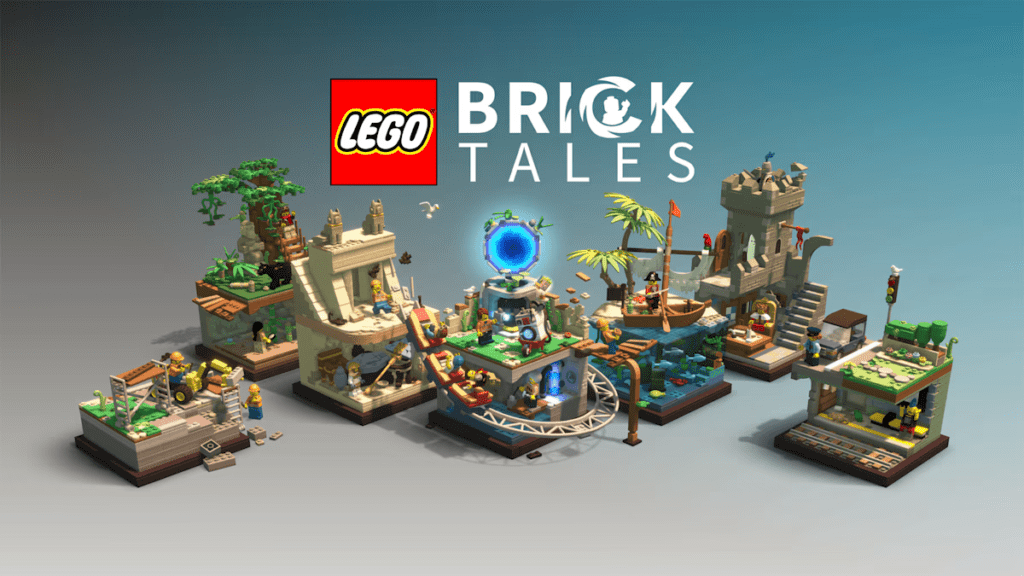
Lego games have been around for a long time. Naturally, most new players assume you’ll be building things out of Lego but traditionally, that hasn’t been the case. Instead, you smash up Lego structures, assemble items by holding down a button, and solve puzzles here and there. But that dream of actually playing with Legos always hovers in the background like a phantasm, always just out of reach.
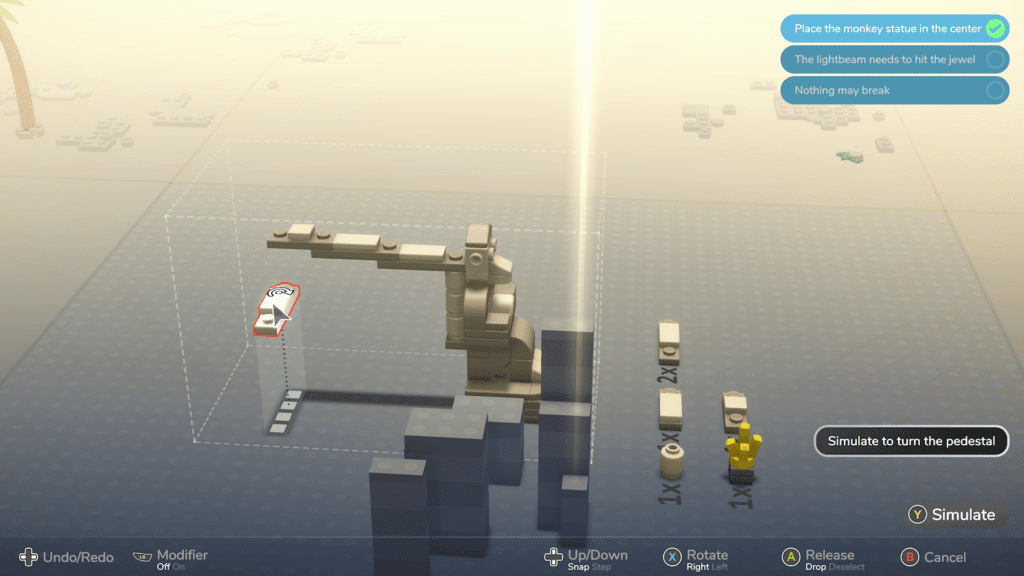
Thanks to the combined efforts of developer Clockstone Studio and publisher Thunderful Games, that’s no longer an issue however! Lego Bricktales is a game where you actually build Lego structures in the game! It honestly sounds too good to be true. In Lego Bricktales, you play a boy whose grandfather is an inventor. He’s working away in an abandoned theme park like a classic Batman villain inventing a weird portal of some sort. Naturally, things go wrong but fortunately not in the way you’d expect. Instead, one of his old inventions mysteriously appears from a parallel universe, a handy dandy robot that explains that it can use Happiness Crystals that can be harvested from people’s happiness in order to fix the theme park up and get it back to working order. It’s a flimsy story with a lot of holes and silly asides, but it makes a good vehicle for the gameplay of Lego Bricktales.
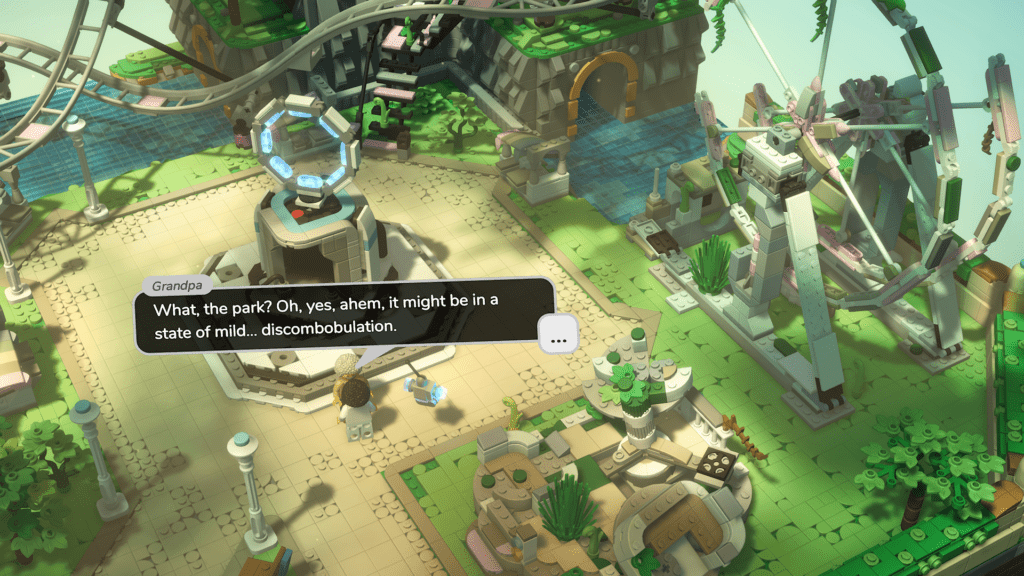
Fortunately your grandfather’s portal technology can be adapted to send you to five different areas to suck up people’s happiness by helping them out. There are jungles to explore, ruined temples, medieval castles, and more. Each one has a basic plot story that you follow along with as well as a host of side quests and collect-a-thons that give you bonuses. You’ll also earn a new power in each area, allowing you to utilize things like the weird purple blocks sitting in piles in various areas or the strange DJ tables sitting in random places. You can look for hidden items with one or perform a rocket jet pack punch in another, but each is only useful in key places through the levels.
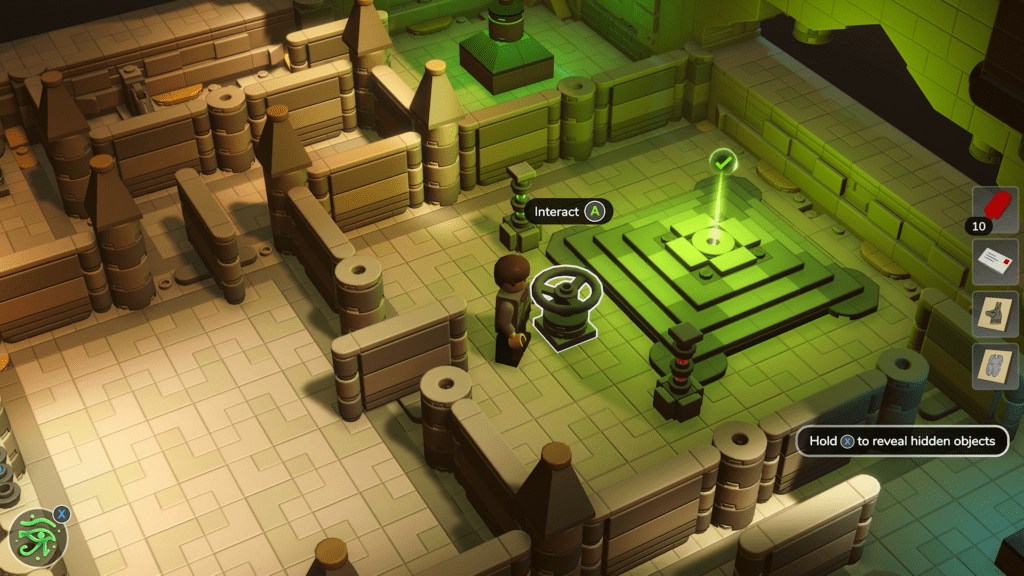
Each level has essentially the same structure. Solve the problems of the people within that work by building a bunch of Lego creations from available blocks and then explore the level to figure out what to do next. When everyone is happy, you get a happiness crystal, return to the theme park, and fix up another ride. It’s not a complex game by any means, but that’s not why it’s fun either.
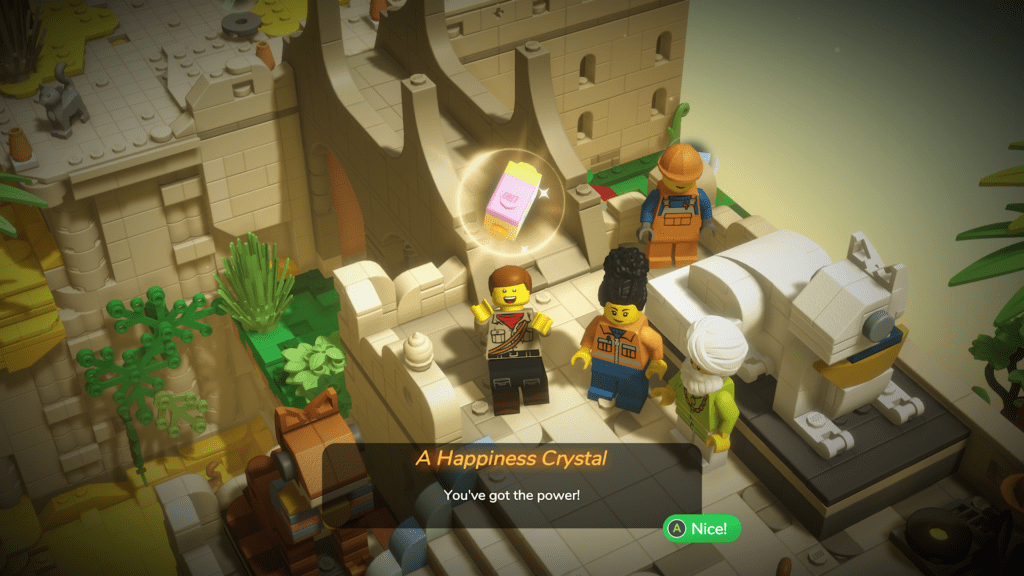
The best part of Lego Bricktales is, of course, building Legos. Making a bridge that you can walk across is harder than you’d expect here, and there’s a simulation option to test your structures in order to demonstrate how much of a failure you are at Lego engineering. It takes a bit of a knack at first to figure out how to build individual items, but the puzzles certainly aren’t going to have you pulling out your hair or anything like that. Some are quick and easy, others more complex, and it’s remarkably easy to get distracted by building a complex structure that’s aesthetically pleasing when something incredibly basic and simple would do.

But Lego Bricktales isn’t all light-hearted fun and games. Unfortunately there are a few downsides to the game that will leave players at least a bit frustrated. Chief amongst these is the building itself. It’s great to be able to build things with Lego but the fixed camera perspective is pretty inflexible and zooming in often hides the bricks you are using from view, forcing you to zoom out, rotate, and then zoom back in again. Bricks are stubborn to line up as well, leading to a remarkable portion of the gameplay being consumed by attempting to put the same brick in over and over again or tearing down a structure because it didn’t work the way you expected since a few bricks are slightly misplaced.
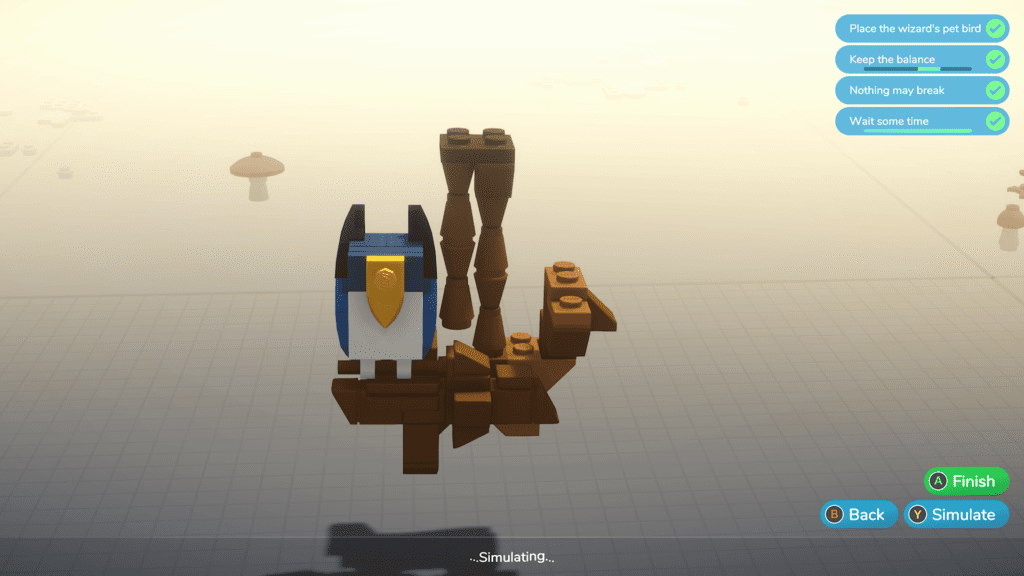
There are other issues as well though. One is your walking speed, a glacial pace that leaves you yelling at the screen to have your brick avatar speed the heck up. There’s no reason for this, especially when other Lego games have had smooth, easy-to-use controls and movement for characters. It’s easy to get caught on the scenery too, leading to weird backtracking that is reminiscent of the awkward movements of Elon Musk’s recently debuted crappy robot. Any time movement is restricted by a game, the action feels forced and Bricktales certainly manages to tie the hands of players. The game also doesn’t do a very good job of explaining what to do and where to go sometimes, so you’ll end up walking in circles trying to figure out where to get more gold in the castle for example. Even the quick menu that lets you switch between abilities barely gets a mention and some players might wander around for hours before they figure out that one of the shoulder buttons allows you to switch between abilities on the fly (this never happened…you hear? Never…).
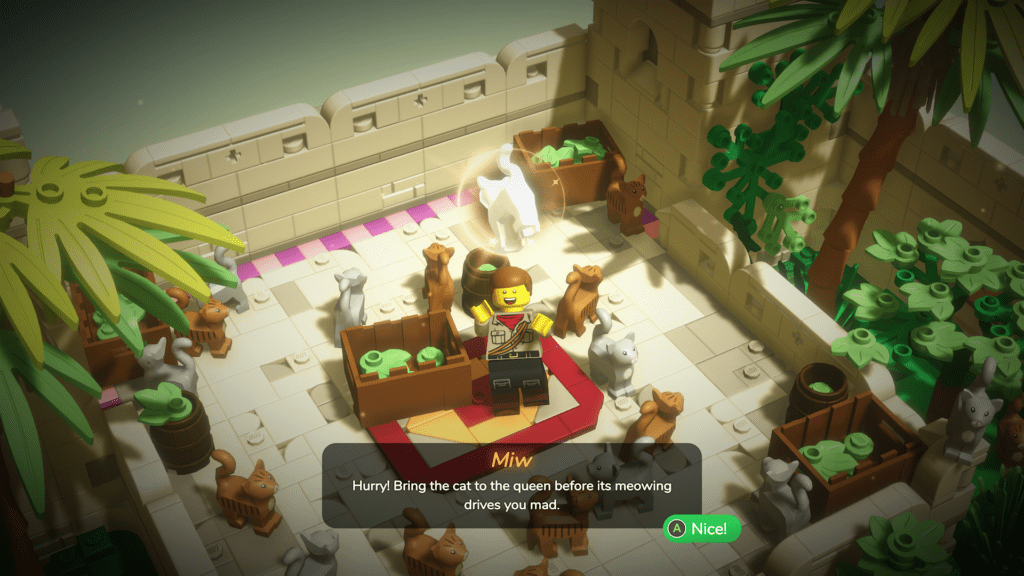
Finally, there’s the backtracking. While Bricktales isn’t an open world game per se, you can go back to earlier levels and find new items with your new abilities as you progress through the game. Unfortunately, this is ridiculously time-consuming, there’s no map, and it’s hard to remember what was where if you played through a level before you had a powerup that allowed you to proceed. And skipping back and forth through levels isn’t very entertaining when you have goals like “Collect 20 chameleons”. Oooh, fun.
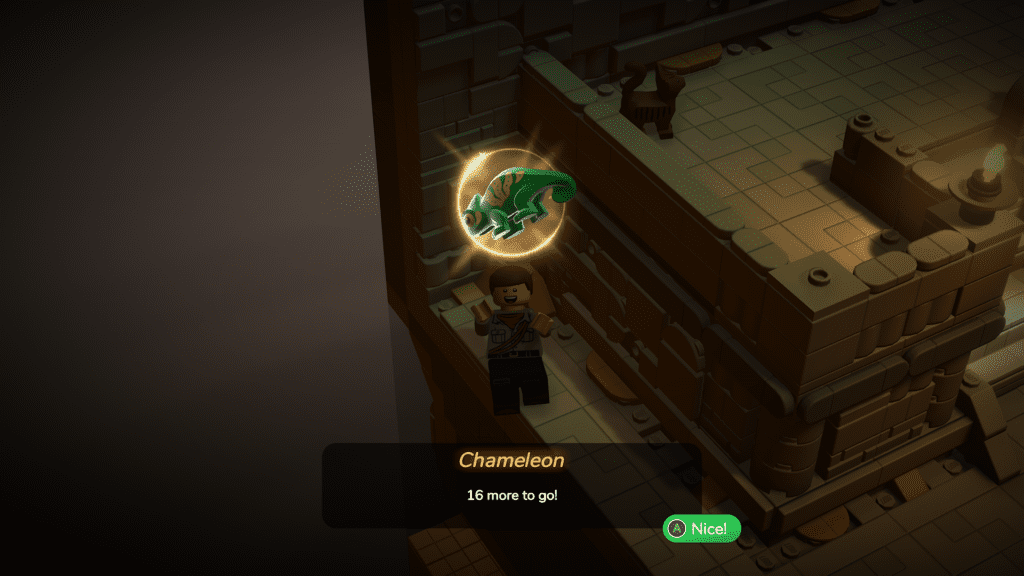
It should be noted at this point that Lego Bricktales is available for multiple platforms. This is important because the Switch version of the game has something that others don’t, namely touch gameplay. It would naturally make sense to put touch gameplay into a Lego game because physically moving bricks around is what playing with Legos is all about. Naturally, this seemed like a pretty exciting way to play the game. Sadly, touch controls are not particularly effective in Lego Bricktales. Because of the fixed perspective camera, it’s hard to get to where you can touch the screen effectively and build structures. Some of us also have giant hands that dwarf the Switch controllers and touch too many points on screen at once, leading to conflicting messages being sent for control due to the inputs resulting from ham-fisted screen use. In short, use the controller. The Switch also runs Bricktales at a lower resolution and has longer load times, leading to the assumption that the optimization isn’t the best here. The game looks fuzzy and lackluster, especially when paired side by side with the Xbox Series X’s crisp and clean visuals.
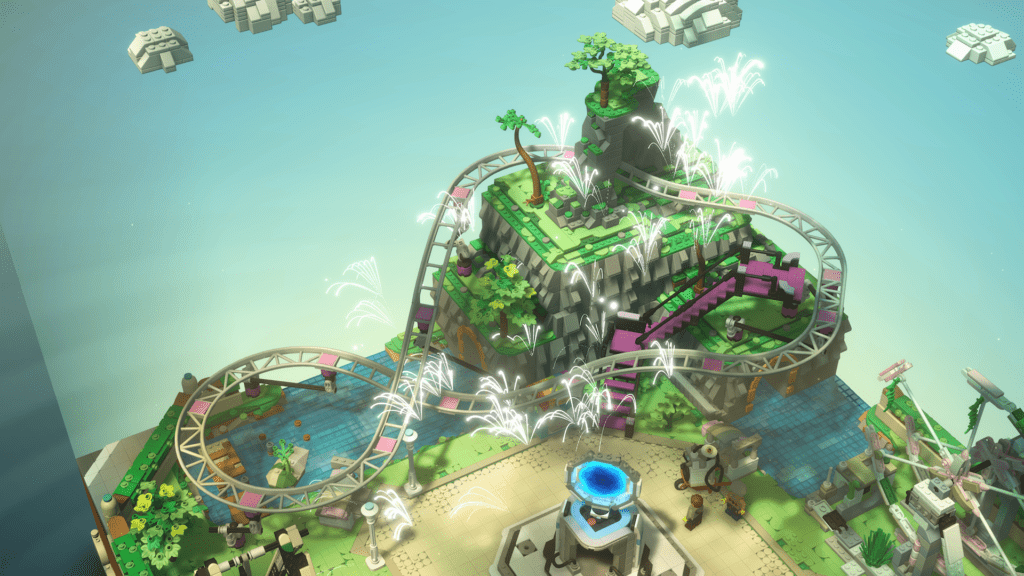
Speaking of visuals, Bricktales is a gorgeous game. Clockstone has put a fantastic level of polish on the Lego franchise here and each level is interesting and filled with detail. The brick creations are complex and cool and the whole game is excellent. Naturally, it looks better on better hardware, so don’t expect the same wow from the Switch but the game just looks good. Oddly though, there’s also a fair bit of issue with the game’s camera. Gameplay uses a fixed camera perspective and you cannot move it while exploring, so you’re constantly wandering around corners and waiting for the camera to move, leaving you unable to shift the view around and enjoy the neat Lego scenery. That’s really a shame because the game is just fun to look at. It’s also frustrating because it’s harder to tell where to go and where you can go in some areas. The audio is equal to the sound of course, but it might have been more fun to have hokey voice acting along with the silly script. Music and sound effects are solid and interesting, but they do fade into the background sometimes and this probably won’t be a soundtrack you search out.

All in all, Lego Bricktales is a fun mixed bag of a game. You get to build your own creations but you’re limited by the bricks available. There’s a sandbox mode that lets you do whatever you want almost like a mini-Minecraft, but it’s not as engaging as solving puzzles by building. The build interface is fun and easy to use but it’s also finicky, resulting in some frustration and the controls and collision detection could definitely use some optimization. This is a fun first attempt however and anyone who’s wanted to build Legos in a game will appreciate what Clockstone has done here. In short, this is a good game but not quite a great one. The potential is there though and this 15 or so hour game (you’ll get distracted and it’ll take a bit longer) is certainly a good time even if it isn’t entirely perfect. If you’re on the fence, Lego Bricktales is fun and unique, even if it might be a bit challenging for younger players.
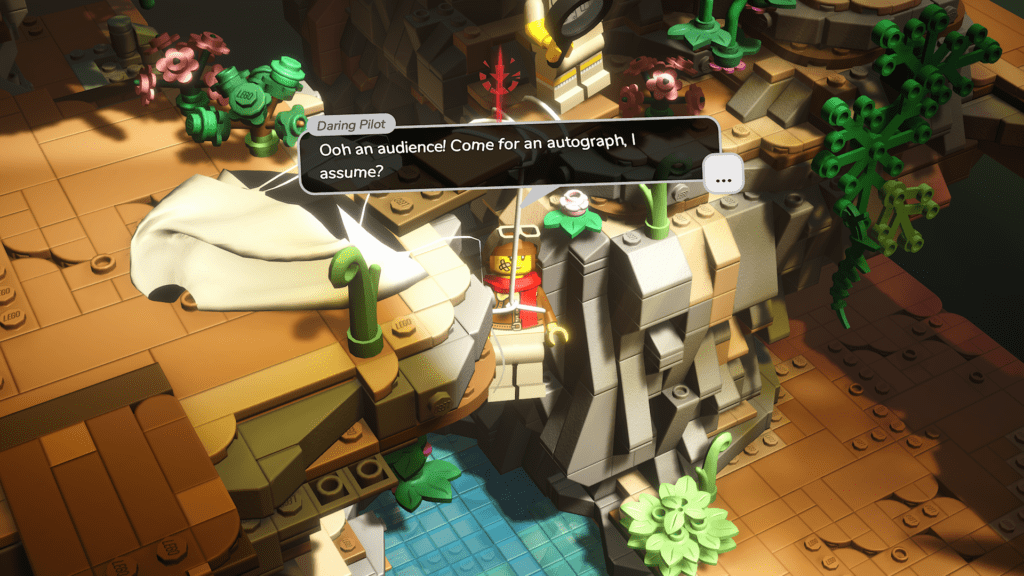
This review was based on a digital copy of Lego Bricktales provided by the publisher. It was played on a Nintendo Switch in both docked and undocked modes and on an Xbox Series X using a 55” 1080p TV. Lego Bricktales is also available for PS4 and PC on Steam.

